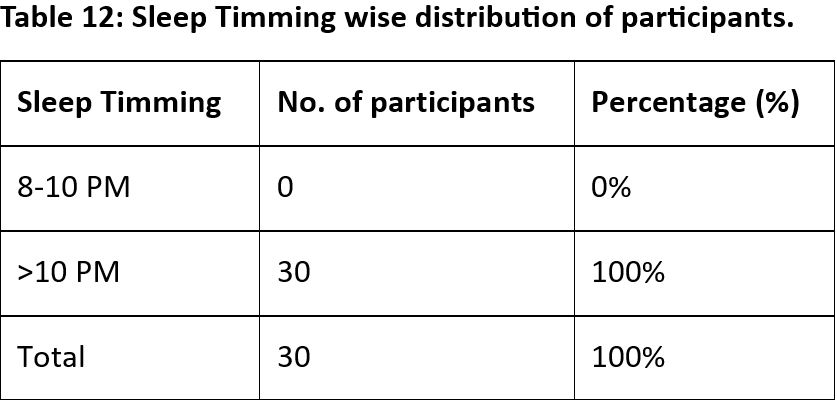Assessment of Sleep Quality among Young College Student in Bhopal City - A Pilot Study
DOI:
https://doi.org/10.21760/jaims.10.5.5Keywords:
PSQI, Sleep quality, Trayopasthambha, NidraAbstract
Background: Sleep is a period of inactivity and restoration of mental and physical function. Sleep Quality is an indicator of good health as it relieves stress and normalizes body tissues. According to Ayurveda Nidra was quoted under Trayopasthambha (Sub pillars of life). In present times, insufficient and disturbed sleep have become common problems in young college going students. Numerous factors that affect the sleep quality in young generation are increased screen time, stress and poor sleep hygiene consumption of caffeine/alcohol/smoking and attempting to sleep in noisy environment. Materials and Methods: This cross-sectional study was carried out as a pilot study on 30 college going students of age group between 17-24 years from different government /private colleges of Bhopal city. Sample was selected by non-probability sampling technique. A detailed questionnaire was prepared and the subject were interviewed using the questionnaire for collection of relevant data. Assessment of sleep quality was done by PSQI (Pittsburgh sleep quality Index). Result: Global PSQI scores calculation showed that all (100%) of respondents had PSQ >5 which shows that all students had poor sleep quality and no one had good sleep quality. Conclusion: On the basis of this study it can be concluded that maximum college going students have poor sleep quality.
Downloads
References
Carol M, Glenn PM. Pathophysiology: concepts of altered health states. 8th ed. New York: Wolters Kluwer Health Lippincott Williams & Wilkins; 2009.
Jensen DP, Herr KA. Sleeplessness. Nurs Clin North Am. 1993;28(2):385-405.
Fernando AT, Samaranayake CB, Blank CJ, Roberts G, Arroll B. Sleep disorders among high school students in New Zealand. J Prim Health Care. 2013;5(4):276-82.
Kashinath S, editor. Charak Samhita of Agnivesha. Sutra Sthana, Ch. 11, Ver. 35. Vol. 1. Varanasi: Chaukhamba Bharati Academy; 2020. p. 199.
Kashinath S, editor. Charak Samhita of Agnivesha. Sutra Sthana, Ch. 21, Ver. 35. Vol. 1. Varanasi: Chaukhamba Bharati Academy; 2020. p. 162.
Kashinath S, editor. Charak Samhita of Agnivesha. Sutra Sthana, Ch. 21, Ver. 36. Vol. 1. Varanasi: Chaukhamba Bharati Academy; 2020. p. 163.
Owens J; American Academy of Pediatrics’ Committee ASWG. Insufficient sleep in adolescents and young adults: an update on causes and consequences. Pediatrics. 2014;134:921-31.
Boboltz WC, Brown SF, Soper B. Sleep habits and patterns of college students. J Am Coll Health. 2001;50:131-5.
Das-Friebel A, Perkinson-Gloor N, Brand S, et al. A pilot cluster-randomized study to increase sleep duration by decreasing electronic media use at night and caffeine consumption in adolescents. Sleep Med. 2019;60:109-15.
Hower IM, Harper SA, Buford TW. Circadian rhythms, exercise, and cardiovascular health. J Circadian Rhythms. 2018;16.















